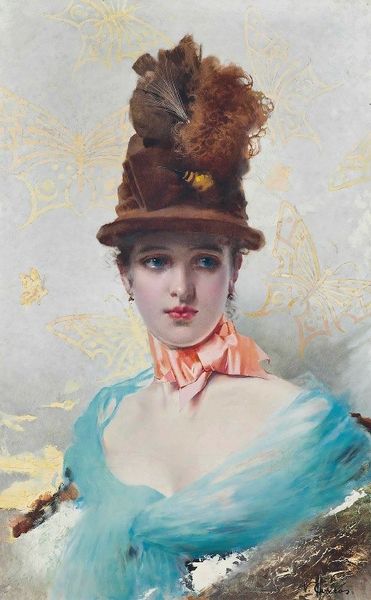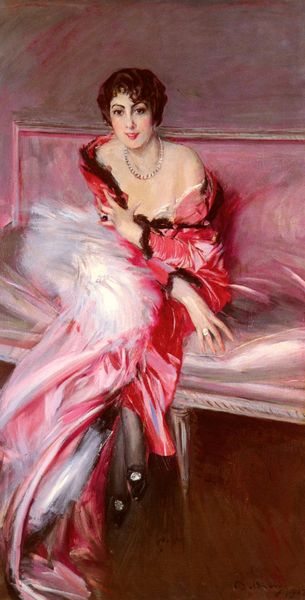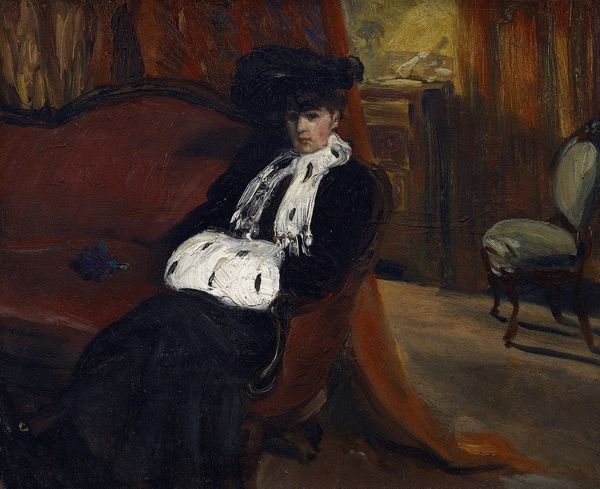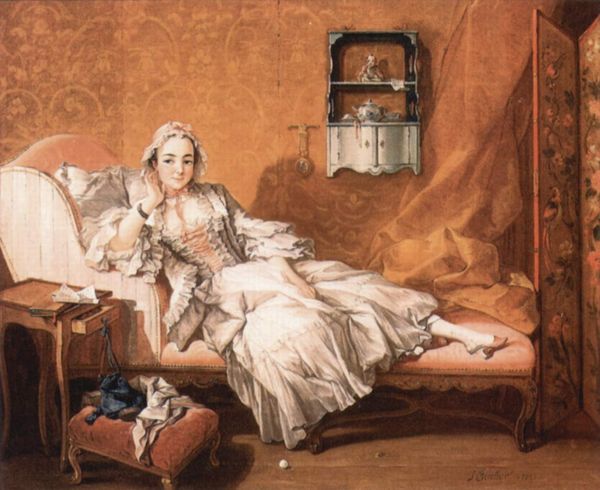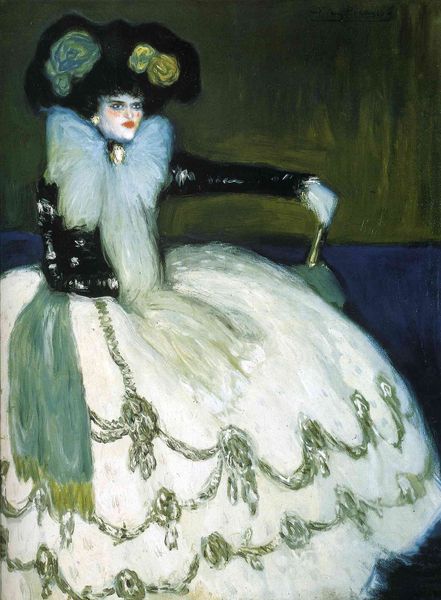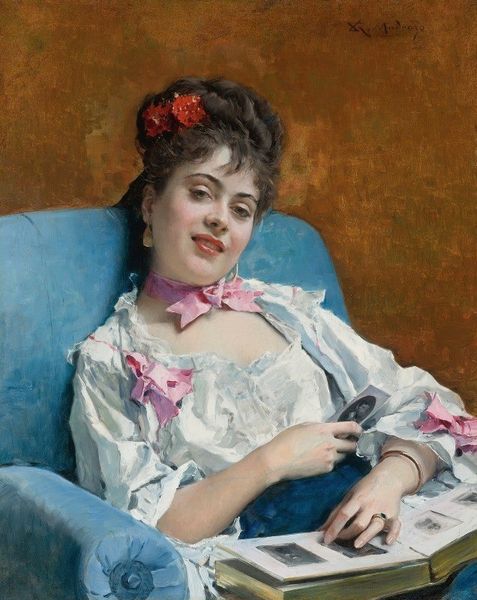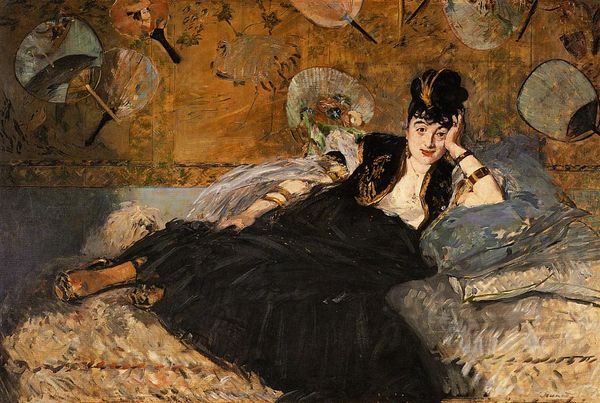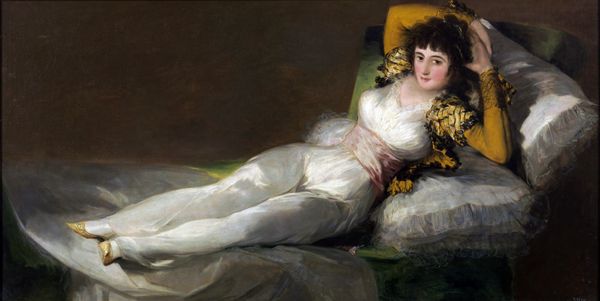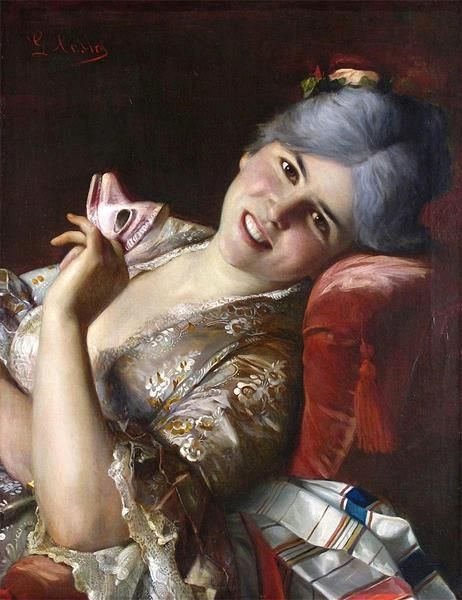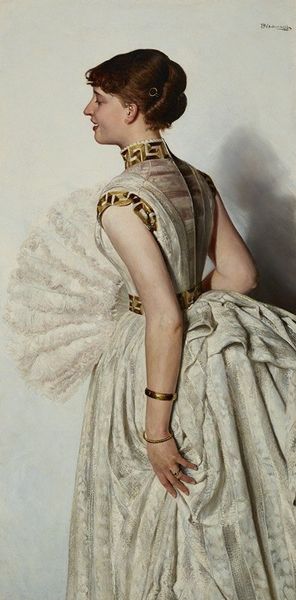
Copyright: Public Domain: Artvee
Curator: I find myself both charmed and unsettled by Giovanni Boldini's oil painting, "Portrait Of Giovinetta Errazuriz," created in 1892. There's a distinct tension between the sitter's age and the knowing gaze she casts. Editor: The immediate feeling for me is one of constraint. Notice how the composition is vertically compressed, almost trapping the figure within the frame. The greyscale, and the narrow space contributes to an oppressive atmosphere despite the frilly fabrics and doll-like costuming. Curator: Yes, but within that oppressive space, isn't she asserting a level of knowing that transcends mere child-like innocence? Consider the accoutrements of the era – the ruffles, the velvet, the black stockings – all designed to contain and present women, young and old, as objects of art and societal expectation. Editor: Indeed. It's almost a study in contrasts. There is so much dynamism created with brush strokes in the ruffles on her garment but then, simultaneously, we're left with a rigid portrait. She’s constrained on that couch by the color palette of whites, blacks, and grays and a tightly framed rectangle of the painting's physical size. Semiotically, these can point to hidden meaning. Is she performing a role or longing to escape? Curator: Precisely. And her attire suggests a play-acting of adult sophistication, reflecting a society where youth was rapidly forced into the mold of maturity. The details become crucial – the slight smirk, the direct gaze, challenging the constraints, however subtly. Consider the black stockings for a young lady—they symbolize a move towards modernity, but also toward something less pure, and certainly more knowing. Editor: Looking closely, notice Boldini’s virtuoso brushwork – a characteristic feature of his Impressionist style, especially visible in her frilled dress. He uses short, broken strokes to render the texture and shimmering effect of the light, thus creating an energy that contrasts the subject's composed position, so even as a little girl she's performing. Curator: A performance, absolutely. But is she complicit or resisting? That ambiguity is the painting's strength. The child exists on the precipice of adolescence, between two worlds, in a costume and place not entirely her own, making it a potent and psychologically charged representation of a girl in the 1890s. Editor: On the whole, that dynamic contrast gives the piece staying power. What starts as an impression evolves into a deeper conversation about how we all, to some degree, engage in and react to performances. Curator: It’s a subtle reflection of an era's hidden truths and expectations made more meaningful through close analysis. Editor: Indeed. It offers a new perspective, layer by layer, making us reflect on a specific time and its many faces.
Comments
No comments
Be the first to comment and join the conversation on the ultimate creative platform.


